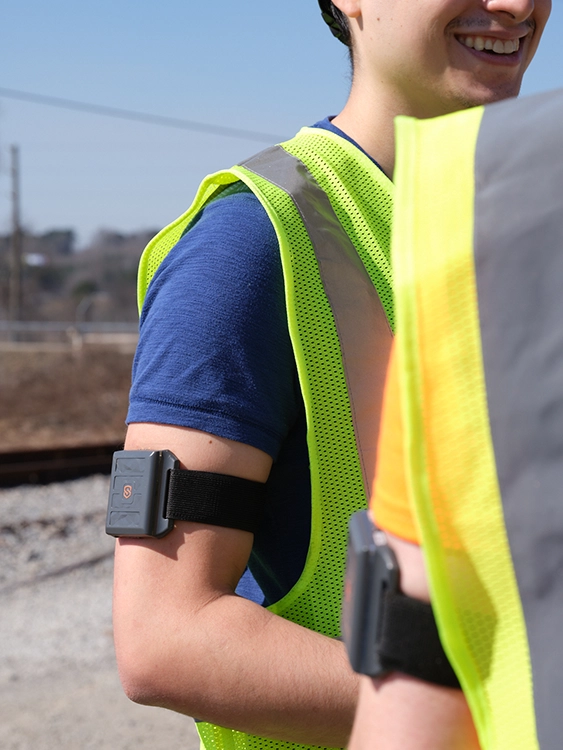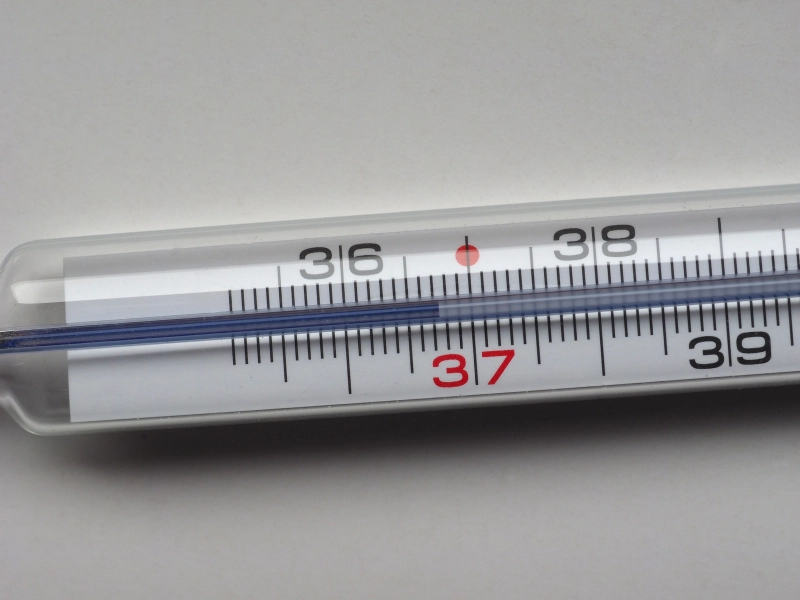Understanding your body’s response to heat and exertion is a matter of safety, health, and performance optimization. Among the most telling physiological indicators is the core body temperature (CBT). Yet, accurately measuring CBT, especially in demanding environments, is complex and often requires invasive and impractical methods. But what if we had more accessible, accurate, and non-invasive ways to monitor CBT, allowing us to act against heat strain preemptively?
This article dives into the importance of tracking CBT, the challenges current measuring methods pose, and the promising breakthroughs in wearable technology revolutionizing our approach to health and safety. From athletic fields to military zones and high-risk industrial settings, the implications of these innovations are far-reaching and transformative. A new era of personal health and safety monitoring is here, and it’s time to take a closer look.
Core body temperature and early signs of heat strain

Measuring internal body temperature is important to catch early signs of heat stress because it directly shows how well the body balances its heat. Heat stress happens when the body can’t get rid of excess heat fast enough. Usually, the human body keeps a pretty steady inside temperature, but when we do heavy physical work or are in a hot place, our body heat production goes up. To stop overheating, the body has different ways to cool down, like sweating and sending more blood to the skin.
However, in hot conditions or when doing heavy physical work for a long time, these cooling methods might not be enough to balance the body’s extra heat, causing the internal body temperature to rise. This is called hyperthermia, which can result in mild heat-related illness, like feeling dizzy or sick, or even be life-threatening.
By tracking internal body temperature, we can see early signs of heat stress and take necessary steps, like reducing physical work, moving to a cooler place, or drinking more fluids. This is especially important for people who work in hot environments or do heavy physical work, like athletes, military members, and factory workers. However, current measurement methods are impractical in situations with lots of movement or emergencies because they are invasive, obstructive, or too expensive.
Current methods to measure core body temperature

Checking a person’s body temperature is a key way to understand their overall health, and there are different ways to do it, each with its own pros and cons. These methods can be divided into two types, invasive and non-invasive. Invasive methods involve putting a temperature-measuring device into a body part or organ. These methods are accurate and reliable but can be uncomfortable, potentially risky, and aren’t usually used for regular or continuous monitoring.
Non-invasive methods take the temperature from the body’s surface or places inside the body that are naturally open, like the mouth, armpit, or ear. These are more comfortable and practical for regular use. Still, their accuracy can be influenced by things like recently eating or drinking (mouth), the surrounding temperature (armpit), or not placing the thermometer correctly (ear).
Technology is always improving and giving us new ways to measure body temperature that is more comfortable, convenient, and accurate. A promising solution is wearable technology that non-invasively measures body temperature and provides continuous monitoring and early detection to prevent heat-related illnesses, especially in sports, military, and high-intensity work settings.
The future of heat stress monitoring

At SlateSafety, we’re proud to be leading the charge in combating the negative impacts of heat stress on workers with our advanced wearable technology. Our BAND V2 armband monitors core body temperature data in real-time and protects workers from heat-related illnesses by detecting early signs of heat strain, thus enabling preventive measures.
The BAND V2, trusted by thousands of workers across various industries, is easy to use, reliable, and rugged. It keeps track of personal safety aspects like heat-illness prevention, real-time safety alerts, and automated work/rest cycles. It also provides lone worker support with emergency SOS alerts and fall and no-movement alerts.
From the start, we’ve created durable, dependable, and straightforward products that protect workers from injuries, and the BAND V2 represents a significant evolution in those efforts. The BAND V2 is a successor to the highly successful BAND V1, an early warning wearable for heat stress detection, and has also been developed after intensive research and development. This next-generation device offers a substantial capability enhancement while preserving its predecessor’s toughness and simplicity.
The V2, crafted with high-impact plastics in the United States, has a comfortable design and a resilient strap, making it easy to wear on the upper arm, even beneath PPE. Out of the box, the BAND V2 comes equipped with several new features, such as automated work/rest cycles, fall detection, and SOS Tap Alert. These improvements in functionality broaden the contexts where wearable tech can have an impact, prompting safety programs to reconsider where wearable technology can be integrated into their organization.
The BAND V2 helps users re-imagine their perspective on wearable tech. What was initially a straightforward tool for monitoring heat stress and overexertion now becomes the cornerstone for entirely digital transformations in worker safety programs.

